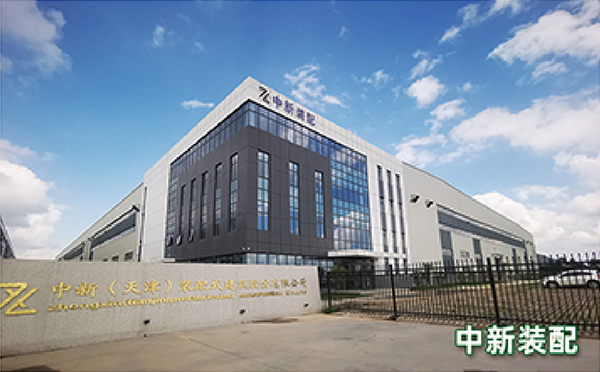
I. Location Advantages
The Tangguantun Processing and Logistics Zone is located in the southwest of Tianjin, and is one of the 31 municipal-level demonstration industrial zones established by the municipal government in 2009. In September 2020, it was approved by the Ministry of Housing and Urban-Rural Development as a national prefabricated building industry base.
The park is located in the center of two national-level new districts - Binhai New Area and Xiong'an New Area. The Tianjin-Pukou Railway, Beijing-Shanghai High-speed Railway, and Tianjin-Cangzhou Expressway pass through the town. It has become the first gateway for northbound traffic into Tianjin, and is known as the "south gate of Tianjin" and the "first town in the south of Tianjin". It takes just 2 hours from Tangguantun to Beijing via the Tianjin-Cangzhou Expressway, 1.5 hours to Xiong'an New Area, 1 hour to Binhai New Area, and half an hour to Tianjin South Station. The Tianjin-Pukou Railway and Nangang Second Line have formed a cross-artery for railway transportation, creating unique opportunities for the development of road-rail intermodal transportation in Tangguantun.
II. Overview of the Park
The planned area of the park is 7.44 square kilometers, including the starting area Unit 01 with 3 square kilometers, and the expansion areas Unit 02 and Unit 03 with a total of 4.44 square kilometers. The industrial development orientation of the park is high-end logistics, intelligent manufacturing, and improving the quality and efficiency of existing prefabricated building enterprises.
(I) The Starting Area
There are a total of 48 settled entities in the park, including 42 industrial enterprises, 4 commercial enterprises, and 2 service-oriented enterprises. After years of development, the park has formed three major industrial sectors, represented by its prefabricated building industry (represented by China Railway Construction Bridge Engineering Bureau Group Co., Ltd., Zhongxin Building Technology Group Co., Ltd., Fengqiao Construction Group Co., Ltd., and Tianzhu Haopeng Construction Engineering Co., Ltd.), energy sector (represented by Sanhe Zhongcheng Energy Co., Ltd., Sinochem International Corporation, and Tanghao Trading Center), and logistics processing sector (represented by Gree Electric Appliances Warehouse, Youfa Ruida Logistics Co., Ltd., and Youfa Stainless Steel Co., Ltd.).
(II) The Expansion Area
Unit 02 is located to the west of Tangguantun Railway Freight Yard, which is one of the nine second-level freight hubs designated by Tianjin municipality and the intermediate station of the Tianjin hub. It is located along the Beijing-Shanghai Railway and currently able to meet the loading and unloading needs of semi-trains. The main goods transported to and from the station are steel and petroleum. Petroleum is mainly transported through a dedicated line to destinations beyond Beijing and Shenyang, while the sources are mainly from locations beyond Taiyuan, Shenyang, and Tianjin Port. Steel is mainly transported from the freight yard to destinations beyond Zhengzhou and Jinan, while the sources are mainly from locations beyond Shijiazhuang, Anshan, and Baotou.
With the expansion and development of the park, the government of Jinghai district has implemented the Tangguantun Railway Special Line project in order to further improve the transportation capacity of the railway special line. The project is located on the west side of Logistics Avenue in Tangguantun Industrial Park and Logistics Zone, east of the original Tangguantun Railway Freight Yard, and connected to the running line of the existing Tangguantun station of the Beijing-Shanghai Railway. It is a key construction project of Tianjin municipality with a total investment of about 450 million yuan, involving the construction of 5 kilometers of railway special line and supporting facilities. Once the project is completed, it will be able to meet the demand of four trains equipped simultaneously, with a throughput capacity of 2 million tons.





